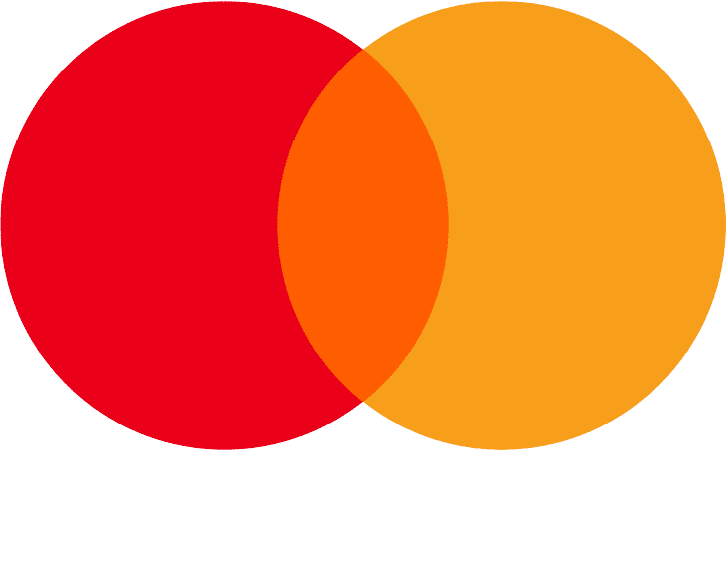What is CBG, CBD, CBN and THC?
CBGA, THC, CBD, CBN, CBC, CBL, CBDA, THCA, CBV, BLAH BLAH, YADDA YADDA. We know, we know. A lot of letter combinations. Over 100 bits of such combinations are found naturally in hemp/cannabis. But what is it? The common name for them is phytocannabinoids. Below we will tell you a little more about some of the most common cannabinoids found in the hemp plant.

What is CBG?
Cannabigerol, which is the whole name for this abbreviation, is a pretty big deal. Nevertheless, most have completely missed this miraculous parent-cannabinoid. Yep, miraculous and parent are probably the two words that we think come closest. Why? Well, make yourself a cup of coffee (enhanced with a few drops of water-soluble hemp oil 7.5%), sit back and learn something new.
Mom, madre, mére, dad, padre, pére. You get the point: Parent. CBG is the basis for all phytocannabinoids found in cannabis and hemp, such as the most well-known and written about, THC, CBD, CBN and CBC. In addition to these, there are another 100 different phytocannabinoids to be a little more accurate.
How does it work?
Of course, we all know where babies come from, but this is a little different. Cannabis and hemp, like all other plants growing on our round organic spaceship, consist of a variety of chemical compounds. What is special about cannabis and hemp are the phytocannabinoids and, of course, terpenes and flavonoids. During their life span, cannabis and hemp first start producing CBG in its acid form (CBGA). Then the magic happens. When the plant is exposed to UV light and oxygen, CBGA is converted to CBDA, THCA and CBCA. That’s when the plant grows under sunlight. Furthermore, during the plant’s life, part of CBDA becomes CBEA, CBCA becomes CBLA and THCA becomes CBNA. And so, it goes, over and over, which means there are hundreds of phytocannabinoids within the hemp plant. It should be clarified that only parts of CBDA and THCA are converted to other phytocannabinoids, not all of them. Pretty impressive, huh?
Can I get high from CBG?
No. Nope. Nyet. CBG, like its “children” Cannabidiol (CBD) and Cannabichromene (CBC), does not bind with CB1 receptors and thus cannot possibly affect the user. This is unlike THC, which binds almost exclusively to CB1 receptors and makes the user high as a kite. Thanks, but No Thanks.
But! The future looks bright for our slightly forgotten parent. More and more studies are laying the foundation for this miraculous cannabinoid. So, keep your eyes open, because CBG is here to stay and may become an important molecule for the endocannabinoid system. A bit like a good mom and dad.

What is CBD?
CBD is just one of the many phytocannabinoids found in the hemp and cannabis plant. Over a hundred different cannabinoids have been discovered so far. CBD, together with Tetrahydrocannabidiol (THC), are the cannabinoids found most extensively in the plant. These cannabinoids, or phytocannabinoids (phyto = plant in Greek. Now you know) as they are really called, bind to and assist the body’s own endocannabinoid system (ECS).
Unlike THC, which has the characteristic psychoactive effect (thus making you high), CBD binds to completely different receptors in the body. CBD doesn’t make you high and has even been shown to reduce the psychoactive effect of THC.
CBD, a molecule that binds to one of the body’s absolute largest signal systems, like CBG and CBC and doesn’t make you high. Completely natural and without any troublesome side effects (in recommended doses). In short, it can be said that phytocannabinoids “boost” and help the body’s own endocannabinoid system. Sounds pretty good, huh? We agree.
So, you can’t get high from CBD?
No. A short and sweet answer. Let’s finish it with a slightly longer but hopefully easy-to-understand explanation. Although CBD and THC are cousins at the molecular level, they bind with completely different receptors in the body and brain, which in turn are part of the endocannabinoid system (ECS) In the brain, there is an almost infinite amount of so called CB1 receptors that bind perfectly to THC and thus creates a psychoactive effect. But CBD does not bind to the CB1 receptors at all. Much like you would try to push a square peg into a round hole. Impossible, however hard you try. Furthermore, we have the CB2 receptors. These are basically scattered throughout the entire body. It’s easy to believe that CBD binds with CB2. Nope.
CBD does not signal directly with either CB1 or CB2, despite being a phytocannabinoid. Instead, CBD signals secondarily through CB1 and, above all, CB2. This partly explains why CBD, unlike THC, does not make you high. Before we go any further, we just want to make sure that so far 65 different molecular hit points of CBD have been found, and if we go into each one this page will be so long that the clocks stop and the time runs out. For those of you who really want to dive down the rabbit hole and get a semi-doctorate in CBD knowledge, we recommend that you venture out on “The World Wide Web”. That being said, we only describe the most interesting (in our opinion) bonding that CBD makes in the body.
In order for CBD, a phytocannabinoid that is consumed externally from, for example, a hemp oil, to be able to step into a human cell and “bind” to a nuclear receptor, it first needs to cross the cell membrane by lifting with a fatty acid binding protein called FABP. This creates different lipid molecules whose task it is to carry different molecules to different parts of the cell. Several of the body’s self-produced endocannabinoids (not to be confused with phytocannabinoids that come from plants), such as anandamide and 2AG, go into different parts of the cell with the help of lipid molecules. Got it? Good. Let’s continue. Once inside the part of the cell where anandamide wants to be, it begins to break down by the enzyme FAAH [fatty acid amide hydrolase] as part of its life cycle. But listen and be amazed! Here, CBD comes in and slows down this process by reducing anandamide’s access to FABP’s transport molecules and, simply explained, slows down the process. So, what is this good for? Well. CBD thus acts as an “anandamide reuptake and degradation inhibitor” (arguably the strangest and longest words on this entire web page) and thus increases the body’s own endocannabinoids.
What is CBN?
In short, it is the child of THCA. Just like we mentioned above about CBGA, and how through contact with oxygen and UV light it becomes THCA and CBDA, CBNA is created when THCA comes in contact with, yes you guessed right, oxygen and UV light. Confusing, but hang on. This occurs to a large extent when the hemp is harvested and not during the growing period itself. So, hemp or cannabis that has been lying around being exposed to oxygen and UV-light for a long time, is guaranteed to contain more CBN than there was when the plant was alive/newly harvested, even more CBN than THC. Chemistry is pretty cool, especially when nature does everything by itself.
Quick fun facts: small quantities of cannabis were found in China, in a tomb more than 2,600 years old. After testing the biomaterial, it was possible to identify larger amounts of CBN but almost no THC. Ten points for science and archaeologists!
As described above, THCA is transformed into CBNA when exposed to oxygen and UV light. During the plant’s life, it’s exposed (of course) to both sunlight and oxygen, which results in a small portion of THCA being converted to CBN, even though the plant is alive. When we then make an extract from the hemp, we grow to make all our wonderful products, the CBN is included. Wide spectrum phytocannabinoids for life (calm down, we remove all THC). Read more about it.
More and more research regarding CBN is starting to emerge. But at present, it is a little premature to know for sure the exact benefits of CBN. More clinical studies are needed and who knows, maybe we have a new guy (read woman) on the horizon in a few years in the cannabinoid world. We’ll just have to wait and see.
Why should I use CBN?
Why o’ why is CBN so important to have in hemp oils, hemp capules and hemp skincare then? Three words: The entourage effect. Just as the name says, different phytocannabinoids interact with each other. CBN helps CBD, CBD helps CBG, CBG helps CBN, etc. And together, these phytocannabinoids assist the body’s own endocannabinoid system. So no, no and again no to isolated cannabinoids such as CBD isolates in hemp oils. It will only be cheaper for the manufacturer but significantly more expensive for you. Buy THC-free hemp oils from us instead, they always contain a wide range of phytocannabinoids.

What is CBC?
Cannabichromene. What…? Another looooong word. So far, we get it, and hopefully you do to, but what is it? The short answer: another phytocannabinoid. The long answer, well, there is no really long answer. Yet. Phytocannabinoids are being studied more than ever worldwide and more and more “new” phytocannabinoids are being identified in hemp/cannabis. But since you, like so many others, have probably never heard of CBC, we will compile as much easily digestible information as possible.
How does CBC come about?
CBCA exists in smaller amounts in hemp/cannabis. CBC is produced after CBCA has oxidized (has spent a longer time exposed to sunlight and oxygen), or when heated to over 100 degrees Celsius. The CBCA has a parent. Yep, you can probably guess who by this point; CBGA. CBCA is one of three phytocannabinoids into which CBGA first develops. So, CBCA, CBDA, and THCA differ slightly from each other and can therefore be divided into three different categories. These three phytocannabinoids then go on to develop over 100 different cannabinoids. So, they form the basis of the chemical set in cannabis and hemp. Evolution gets ten points.
Why should I use CBC?
As we mentioned above. The three golden words: The entourage effect. Always make sure to use a hemp oil that contains a wide range of phytocannabinoids and terpenes.
Can I get high from CBC?
No. Simple as that. As with CBG and CBD, CBC does not bind with the body’s CB1 receptors. If you want to dive in and get more information about these receptors, click here.
What is THC?
Here she is, the celebrity. Tetrahydrocannabinol. The most studied phytocannabinoid. THC is found naturally in cannabis, and in significantly lesser amounts in hemp. THC was first isolated in 1964 by chemist Raphael Mechoulam. The discovery of THC would then lead to discoveries of other phytocannabinoids and also to one of science’s greatest discoveries – the endocannabinoid system. So far, so god!
Can I get high from THC?
Da, yes, si, claro. No doubt about it! THC is the only phytocannabinoid in cannabis/hemp that does this. How? Well, it binds with receptors in the body called CB1. When these receptors receive a THC molecule (outside or inside), this creates an effect that makes the user feel “high”. In order not to sound like a boring biology book that you “read” in school; we will take a short look. You get high from THC but the other phytocannabinoids in cannabis/hemp, such as CBG and CBD, do not have that effect.
Is THC legal?
No. Not in Europe. Some countries have made THC in some cases medicinal legal. But for most countries, is still classified as an illegal drug. THC is also classified as a doping substance and must not be used by athletes. THC is found in both cannabis and hemp but is most commonly found in the former. You see, cannabis and hemp differ slightly here. Cannabis is often the type of plant you refer to when talking about an illegal drug, or as an intoxicant since this plant has a high THC content, usually around 20%. Hemp, on the other hand, has a significantly lower THC content, usually around 0.2%.
But hey, I heard somewhere that hemp oil with a THC content below 0.2% is legal in Europe? Correct. The hemp itself, which contains 0.2% THC or less and is EU approved, is fully legal and is not considered a drug. THC, even in such low concentrations, can still show on a drugtest which in turn could create a long list of problems for the user. Better use an oil with no THC, but still a broad spectrum other cannabinoids such as CBD, CBC, CBG, and CBN.
Another example regarding the 0.2% ”THC-rule” is in Sweden. Listen up now. In 2019, the Supreme Court in Sweden ruled that products from hemp extracts containing the previously “legal” THC content, i.e. 0.2% or below, should be classified as drugs. Thus, these products are equated with cannabis with higher levels of THC (read hemp oils, not to be confused with hemp seed oils that are completely legal and contain no cannabinoids at all).
So why is this so important to emphasize? Well, so you won’t get any problems with the law.
To our swedish customers: Let’s say you buy hemp oil that contains even the smallest amout of THC THC (below 0.2%), and the product is controlled by police or customs – well then you are in trouble. You have ordered drugs and can be punished accordingly.
To our customers in the rest of the EU: THC is visible in both saliva and urine tests. So, let’s say you have to take a drug test at work. If you extensively use hemp oil containing small amounts of THC it stores in the body’s fatty tissue for quite a long time. After a while you will have some pretty substantial THC levels in your body. Hi and ho, bang and boom, the drug test you took at work (convinced that it would of course be negative) shows positive. Positive for THC. One plus one equals two. You’re guessing right: Problem! No fun, considering that you used a product that you always thought was legal.
So, what to do in this case? You want to use hemp oils that contain phytocannabinoids, but you don’t want THC. Simple. You buy hemp products from us. All of our products are completely THC-free and contain a wide range of phytocannabinoids such as CBC, CBN, CBG, CBD. It’s as easy as that. Thank you, I am totally getting it! Take me to the products asap!






